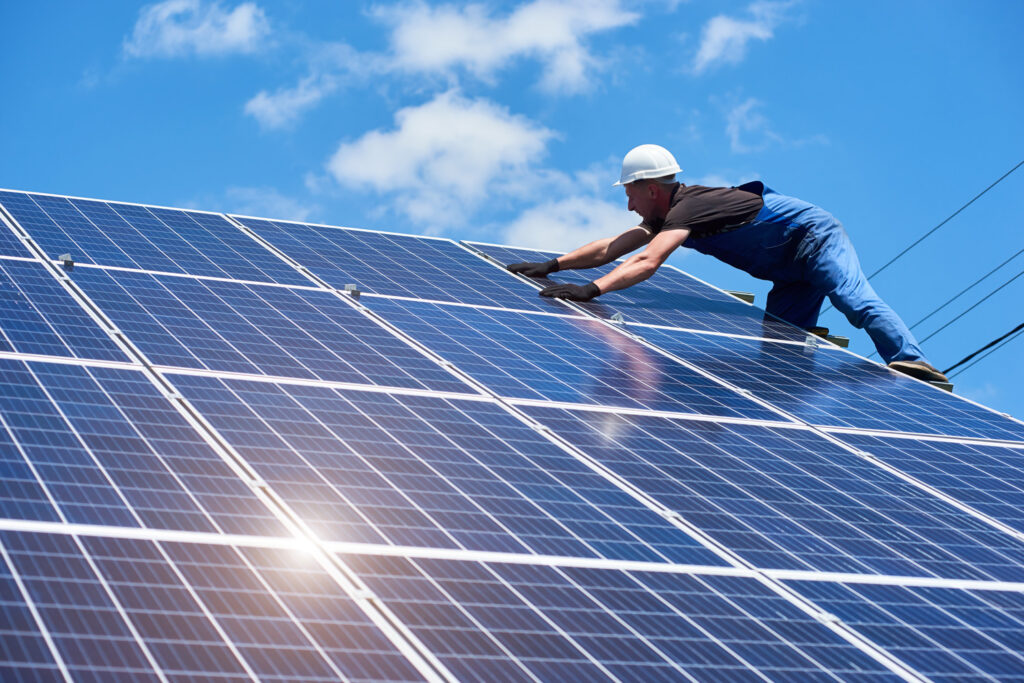
Do solar panels work better on a flat or pitched roof?
Here are some key points to keep in mind
Deciding whether to opt for solar panels with your next commercial construction project is complex and should be based on financial, strategic and practical factors. After weighing the pros and cons, if you decide to install solar panels on your next project, you’ll also want to consider the type of roof that will cap off your building. The design of your roof can impact the ease of installation, operation and maintenance of your solar panels.
Because these decisions should be made early in the process, having a design-build partner can afford you insights from a full spectrum of experts working on your project so that you can make the most informed choices from the project’s inception. This ensures all stakeholders are on the same page and allows the owner to maximize their investment in solar technology. Let’s explore the dynamics of this decision.
The best roof pitch for solar panels
Roof pitch plays an important role for solar panels, with pros and cons for flat roofs, low-sloped roofs and pitched roofs.
Pitched roof considerations
A pitched roof can make it easier to achieve the optimum angle toward the sun without using stands. It also can provide for improved runoff of snow, rain and debris. And that means there is also a lower chance of standing water and associated problems like mold damage and leakage. Maintenance costs may be lower than those for a flat or low-sloped roof. However, the pitch can make it more challenging to maintain, and safety measures must be in place for work to be done, which can drive up ongoing care and installation costs. A steeply pitched roof will likely work for solar panels and may not impact energy production. Yet roofs pitched more than 40 degrees are likely too steep for solar panels and can make installation particularly risky.
Low-sloped roof considerations
Installation and maintenance of solar panels pose less of a safety risk and challenge with a low-sloped roof. A low-sloped roof also allows sufficient water runoff, which can be directed through thoughtful roofing and solar panel design. Snowmelt can be an issue in our climate, as a low-sloped roof may not allow snow to melt as quickly, covering the solar panels and preventing energy generation. Most experts consider a 30-degree angle ideal for solar panels, which will likely require a stand to achieve such an angle with a low-sloped roof.
Flat roof considerations
The roof and solar panels may be less visible to passersby in a flat roof installation, providing an aesthetic bonus. However, flat roofs can provide lackluster drainage, and standing water can deteriorate materials before their time, and snow can prevent energy generation. Flat roofs can be used for solar panels, but brackets will be needed to angle the panels, which can add to installation costs.
Other considerations for solar panels for commercial projects
Many variables play into the solar panel payback period, including factors outside your control, like regional weather. At times, people assume the project will render a return far faster than it does, so it’s essential to carefully study the projected returns with an objective partner. In reality, the decision of whether to get solar panels for many clients is less about the payback period than it is about alignment with an organization’s green initiatives. While solar panels are certainly not right for every project, owner or developer, those who do opt to build in this direction will want to explore grants and other incentives. We’re likely to see more as the federal government pushes green initiatives. Regardless of whether you choose solar panels, our design-build team is at the ready to help make your commercial construction project a reality.